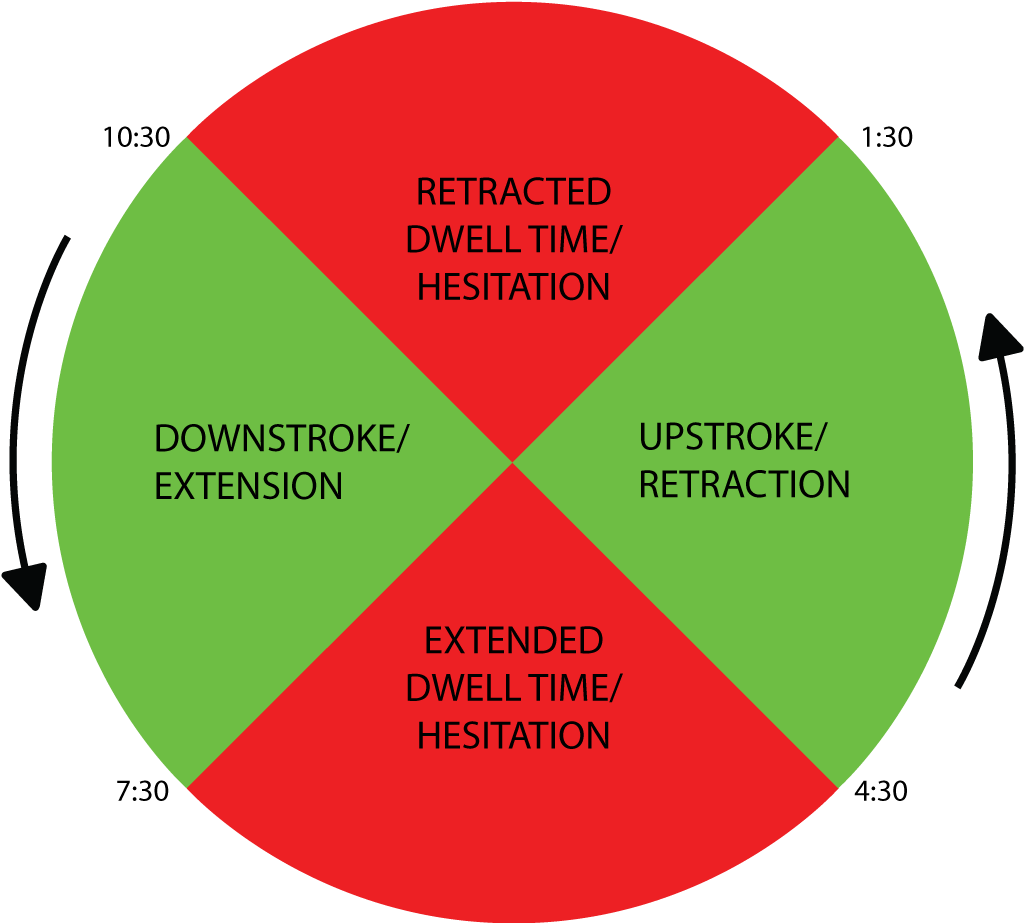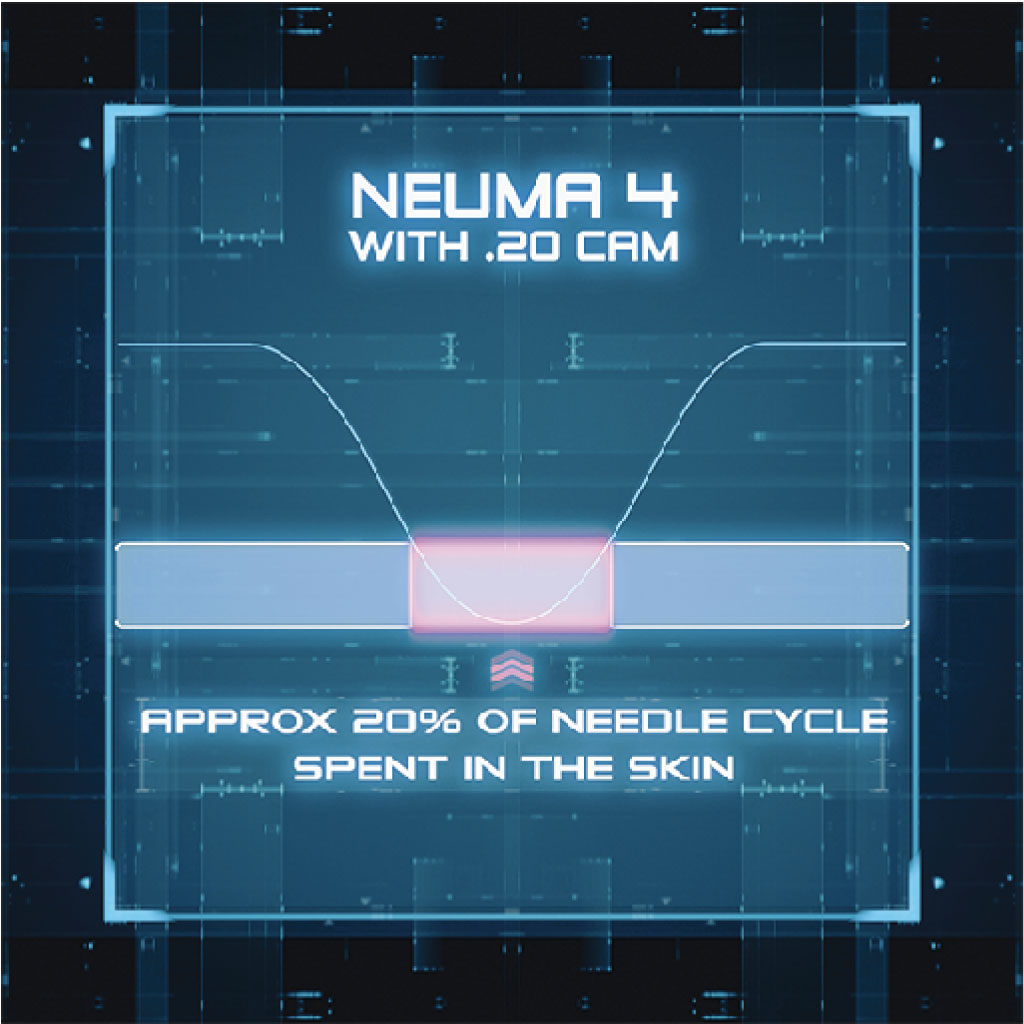Cams
Cam Variations
Neuma cams are designed to control the amount of time the needle spends in each position of a single stroke cycle. The purpose for this is primarily to reduce the amount of “dwell time” a needle experiences in the extended position, which is an inevitable consequence of traditional rotary mechanisms.
A traditional rotary drive mechanism is attached at one point on its rotating cam. As the cam rotates, this rotation causes the needle to oscillate up and down. If the cam were a clock face, most of the extending of the needle occurs between the 10:30 and 7:30 position (as shown in Fig. 1), and the retracting between the 4:30 and 1:30 position. Between 1:30 and 10:30 the needle is not moving up or down much at all, because the drive bar is “crossing over” to the other side of the cam (the downstroke side) but has not gotten there yet. This same hesitation occurs between the 7:30 and 4:30 (or extended) position. We refer to this as “dwell time” because the needle is hanging there, waiting to be retracted.

When dwell time exists in the needles extended position, this can cause problems during certain types or circumstances of tattooing, such as lining, or circumstances when a tattoo artist desires to have a faster hand movement. The issue is that the needle has not retracted quickly enough for the speed the artist is moving his or her hand across the skin, so the needle will get caught in the skin, or “snag”. This can result in excess skin tissue damage and force a tattoo artist to slow down his or her hand movement to accommodate for this.
Neuma has addressed this issue by designing the cams we make to be best suited for several different styles and/or approaches to the tattooing process.
Our 20% cam is designed to have the greatest reduction in the dwell time explained above, making it a perfect option for lining or for very fast hand movements, with only about 20% of its total cycle time being spent in the extended portion (7:30 to 4:30) of its cycle. (see Fig.2)

Our 28% cam has a slightly slower extension portion, with the same fast retraction portion of its cycle of the 20% cam, resulting in about 28% of its total cycle time spent in the extended portion of its cycle. This is ideal for faster-moving shading or color blending.
Our 33% cam has the slowest possible extension portion, with the same fast retraction portion of its cycle of the 20% cam, resulting in about 33% of its total cycle time spent in the extended portion of its cycle. This is ideal for multi-pass blending with slower hand motion, or a very soft black/gray build-up approach.
Our 40% cam has the slowest possible extension portion, with the slowest possible retraction portion of its cycle, resulting in about 40% of its total cycle time spent in the extended portion of its cycle. This cam is great for very slow hand movement, and we recommend it for solid black or color-packing.
In the short video clips on the right side (or below on mobile), you can see some of the cam variations we offer, what their stroke profiles look like on a graph (for better visualization and understanding) compared to other types of tattoo machines, and what their intended uses are.